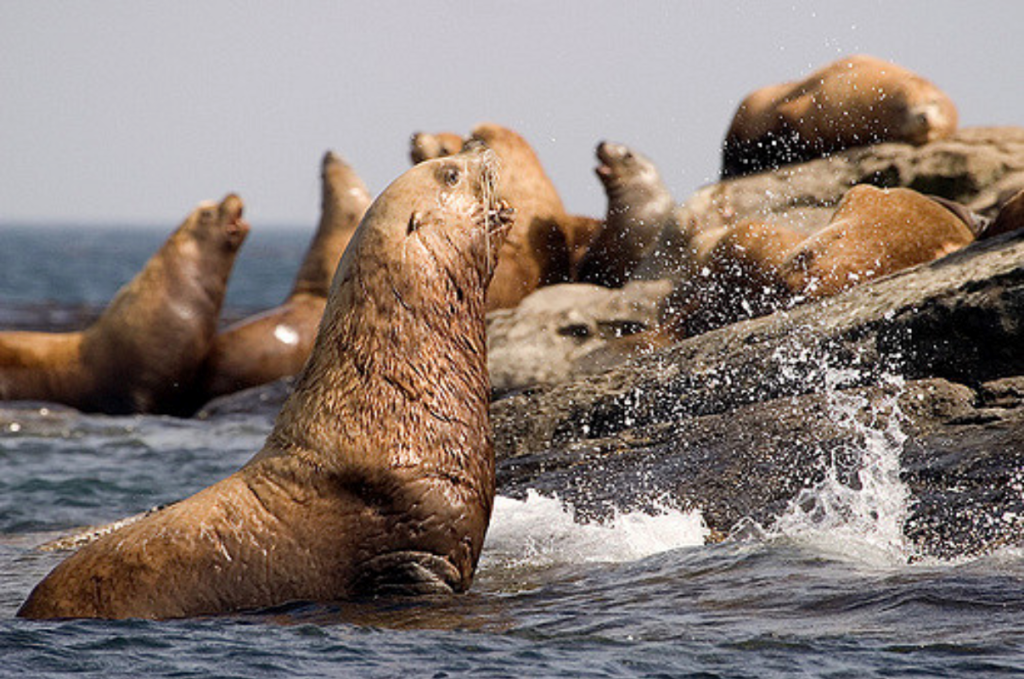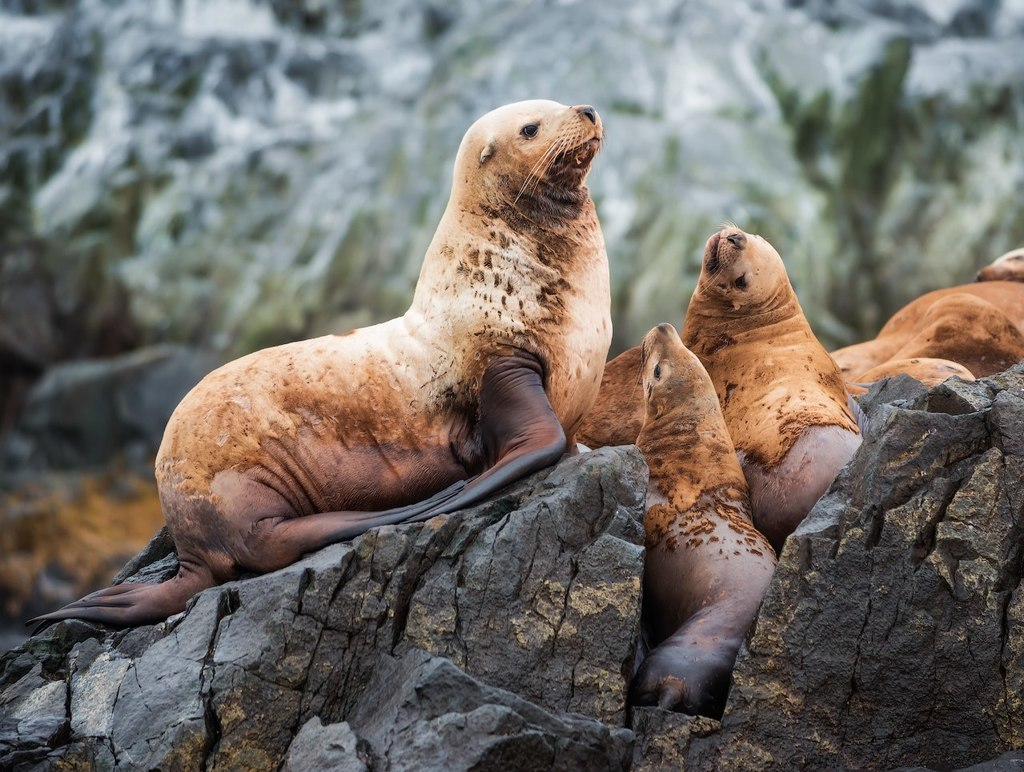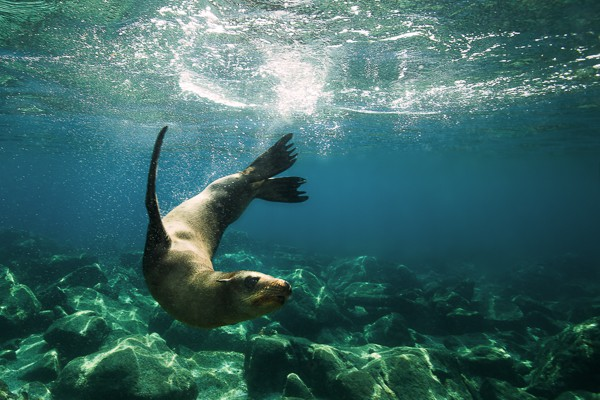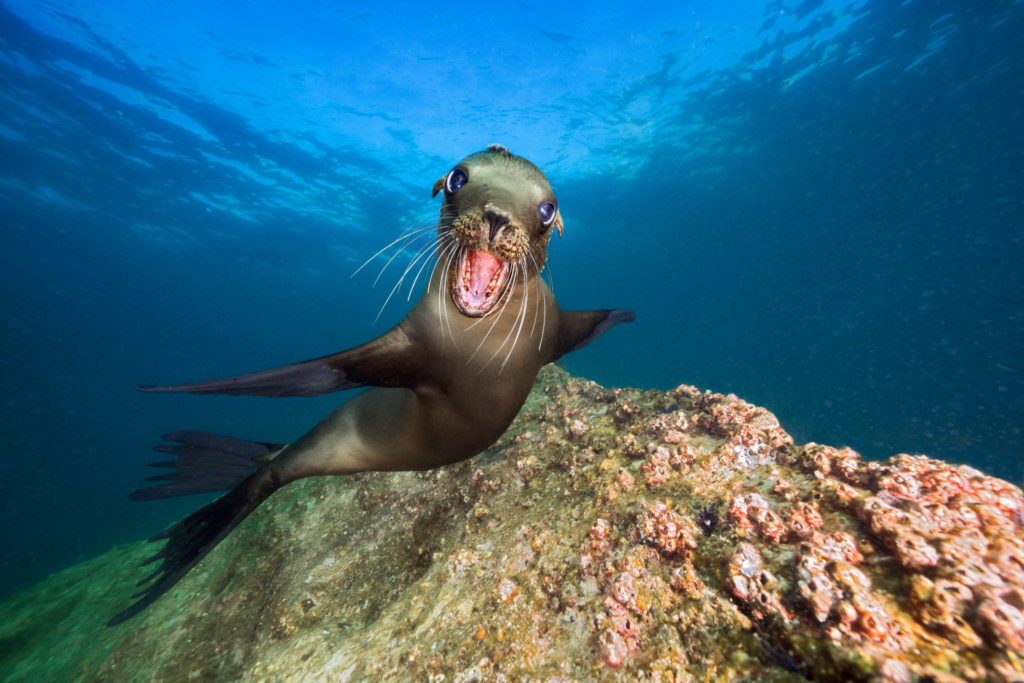Discover the size and sheer magnificence of Steller Sea Lions. Learn about their colossal size, intriguing physical characteristics, and fascinating communication methods.
Steller Sea Lions : Introduction
Steller sea lions, majestic marine mammals inhabiting the northern Pacific Ocean, often captivate onlookers with their impressive size and distinctive features. Frequently confused with California sea lions due to their similar appearance, Steller sea lions stand out as the larger and lighter-colored relatives. This article explores the characteristics, habitats, and population dynamics of these fascinating creatures.
ALSO READ : The Disappearing Dance Of Cooperation : The Partnership Between Honey Hunters And The Greater Honeyguide

Physical characteristics
In addition to their impressive physical characteristics, Steller sea lions exhibit fascinating social behaviors and communication skills. These marine mammals are highly gregarious and often form large colonies, congregating on rocky shores or remote islands. Males establish dominance through vocalizations, posturing, and physical displays, such as raising their heads and roaring to assert territorial control. The females, on the other hand, play a crucial role in maintaining social cohesion within the group, fostering a complex hierarchy that ensures efficient breeding and protection of their young.

Breeding season heralds a dramatic shift in Steller sea lion behavior. During this time, males vigorously compete for the attention of females by showcasing their strength and prowess. These captivating displays involve synchronized swimming, acrobatic flips, and dynamic vocalizations that echo across the coastal landscapes. Once a male successfully establishes a breeding territory, he will vigorously defend it, warding off rival males to secure mating opportunities.
Steller sea lions are not only adept swimmers but also skilled hunters, primarily preying on a diverse diet of fish and cephalopods. Their streamlined bodies and powerful flippers enable them to navigate through the water with ease, reaching impressive speeds in pursuit of prey. The sea lions’ intelligence and adaptability make them successful foragers, and their diet varies based on seasonal availability and regional differences.

Habitat and range
These sea lions are found along the coastal waters of the northern Pacific Ocean, spanning from Japan to Central California. Key breeding grounds, or rookeries, are concentrated in the Gulf of Alaska and Aleutian Islands, with breeding occurring from Año Nuevo Island in Central California to the Kuril Islands north of Japan.
The population in U.S. waters is divided into two distinct groups: the Western and Eastern populations. The Western population, numbering around 46,000 individuals, was listed as endangered in 1997. In contrast, the Eastern population, with approximately 52,000 individuals, was removed from the endangered species list in October 2013, marking a successful recovery.

Breeding and behavior
Steller sea lions exhibit intriguing breeding and behavioral patterns. Pups, weighing 35 to 50 pounds, are typically born from mid-May to mid-July. Mothers dedicate one to two weeks to stay with their pups before venturing off to hunt at sea. During the breeding season, mothers balance hunting and nursing duties on land, gradually increasing their time at sea as the pups mature. Nursing continues for about a year, with some pups nursing for up to three years. Mating takes place 10 to 14 days after the pups are born.

Male Steller sea lions display a unique behavior during the breeding season, refraining from eating. Their diet primarily consists of fish, invertebrates, and occasionally other pinnipeds. However, their formidable size doesn’t make them invulnerable, as killer whales (orcas) and white sharks are known predators.

Conclusion
Steller sea lions, with their remarkable size and distinctive features, play a vital role in the northern Pacific ecosystem. While the Western population faces challenges and remains endangered, the successful recovery of the Eastern population demonstrates the importance of conservation efforts. Understanding these magnificent creatures is essential for ensuring their continued survival and the preservation of the delicate balance within their coastal habitats.
To explore more news : Click Here
ALSO READ : The Precarious State Of The Vaquita : Battling Extinction In The Gulf Of California




































